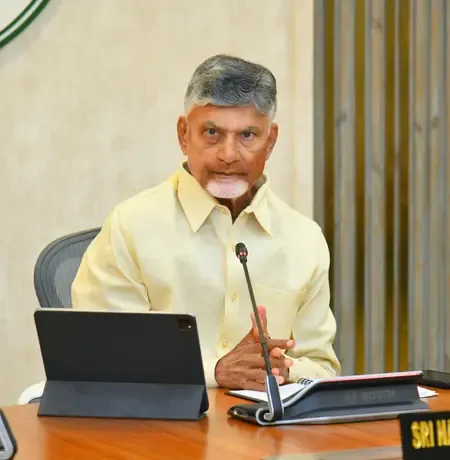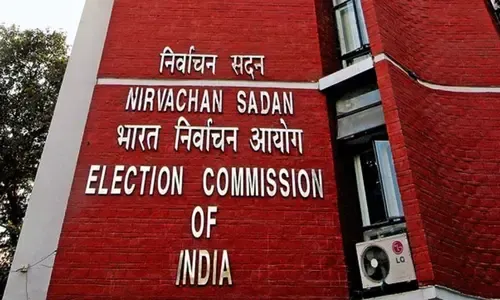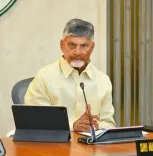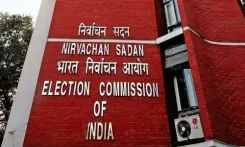Could Cyclone Montha Affect Over 1,400 Villages and 44 Towns in Andhra?
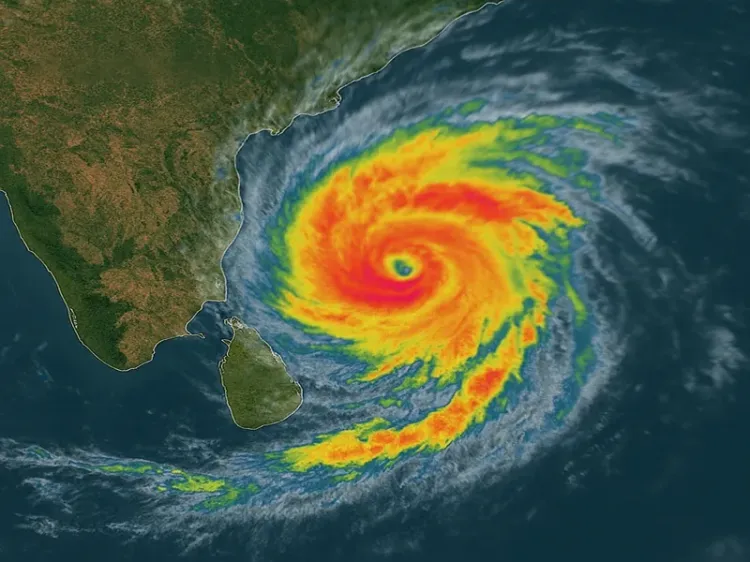
Synopsis
Key Takeaways
- Cyclone Montha is expected to intensify before making landfall.
- Over 1,400 villages and 44 towns are at risk.
- Authorities have opened 2,194 relief camps for affected residents.
- Emergency services are on standby with 558 control rooms established.
- Fishermen are warned against going to sea due to rough conditions.
Amaravati, Oct 27 (NationPress) Severe rains and powerful winds struck coastal Andhra on Monday due to cyclone Montha, which is projected to escalate into a severe cyclone by Tuesday morning. It is expected to make landfall between Machilipatnam and Kakinada in the evening or night, affecting 1,419 villages and 44 towns, according to officials.
The entire coastal area of the state is under high alert as the cyclone may cause extremely heavy rainfall along with strong winds reaching speeds of 90-110 km/h.
Authorities have urged residents to stay indoors, while those in vulnerable coastal regions have been advised to relocate to relief camps.
Prakhar Jain, Managing Director of the Andhra Pradesh State Disaster Management Authority (APSDMA), reported on Monday night that Montha is currently located over the Westcentral Bay of Bengal, approximately 420 km from Chennai, 500 km from Visakhapatnam, and 450 km from Kakinada, moving at a pace of 15 km/h over the last six hours.
The cyclone is anticipated to shift north-northwest and intensify into a severe storm by Tuesday morning, making landfall between Machilipatnam and Kakinada tomorrow evening/night.
Significant rainfall is expected in several areas, particularly from Srikakulam to Nellore, with heavy rainfall also forecasted for parts of Rayalaseema.
According to Jain, the cyclone is set to impact 1,419 villages across 233 mandals and 44 municipalities. Authorities have established 2,194 relief camps in the affected areas.
The administration is prepared to relocate individuals to these camps as needed, with special care given to 3,465 pregnant women and nursing mothers.
A total of 558 control rooms have been established, including one state control room, 19 district control rooms, and 54 revenue division control rooms.
To enhance communication, authorities have deployed 16 satellite phones, 35 DMR sets, and other essential equipment in the districts.
Due to rough sea conditions and the likelihood of high tidal waves, fishermen are cautioned against venturing out to sea. All coastal activities have been suspended, and beaches have been closed to tourists, with danger signal number one raised at all ports.
As a precaution, South Central Railway and East Coast Railway have canceled over 100 trains for the next two days.
Teams from the National Disaster Response Force (NDRF) and State Disaster Response Force (SDRF) are on standby in the coastal districts for relief operations, with additional teams available at headquarters.
The cyclone's effects were already apparent on Monday, with moderate to heavy rains and gusty winds of up to 40 km/h in some coastal areas. By 8 p.m. Monday, Visakhapatnam Rural recorded a maximum rainfall of 92.5 mm, followed by Kapuluppada with 85.5 mm, Madhurawada at 83.5 mm, and Seethamadhara at 81.2 mm, while 73 areas noted over 50 mm of rainfall.
Chief Minister N. Chandrababu Naidu monitored the situation from the Real Time Governance Society (RTGS) Centre at the State Secretariat, asserting that the administration is fully equipped to handle any scenario.
Prime Minister Narendra Modi communicated with Chief Minister Naidu, discussing the state’s situation due to the cyclone's impact and assuring full support.
Naidu instructed district Collectors and SPs to promptly relocate individuals from coastal areas at risk of the cyclone to relief camps.
With the cyclone's impact expected to escalate starting Tuesday, he urged officials to alert the populace.
The Chief Minister confirmed that teams with necessary machinery are prepared to restore electricity, repair roads, manage drainage systems, and clear fallen trees.
He also mandated continuous monitoring of the cyclone's movement and the implementation of zero-risk measures, particularly in coastal and low-lying areas.
He urged citizens to remain indoors and vigilant until an all-clear message is issued.
Nara Lokesh, Minister for Real Time Governance, is coordinating the inter-departmental response, communication systems, and district-level readiness from the RTGS war room.


